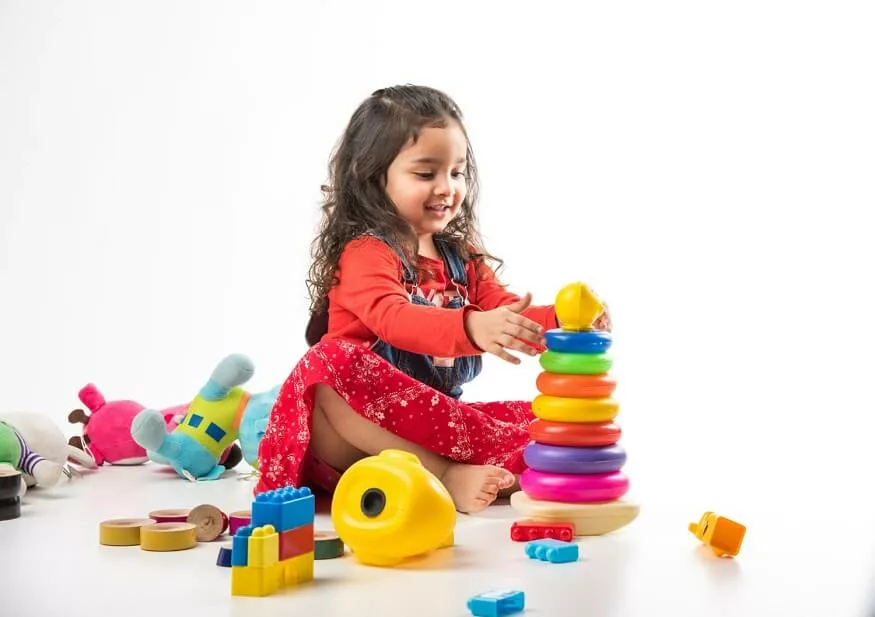Preschool and kindergarten may sound similar, but they actually represent different stages in a child’s education. In this article, we will explore the fundamental aspects of preschool and kindergarten, uncovering the significant disparities that distinguish these vital early learning encounters.
What is Preschool?
Preschool, an educational journey tailored for children between the ages of three and five, aims to provide a structured learning environment that promotes social, emotional, and cognitive growth. It plays a crucial role in introducing youngsters to the foundations of academic achievement by nurturing vital abilities like communication, cooperation, and problem-solving. This formative experience sets the stage for their future educational endeavours.
Preschools vary widely in terms of structure and curriculum. The primary emphasis in preschool is on developing essential life skills, building a sense of independence, and fostering a positive attitude towards learning. Children engage in activities that encourage self-expression, social interaction, and the exploration of the world around them.
What Is Kindergarten?
Kindergarten, on the other hand, is an integral part of the formal education system and is typically the first year of primary school. Kindergarten serves as a bridge between the informal learning environment of preschool and the more structured setting of primary school. It is the starting point for a child’s academic journey, laying the groundwork for future educational pursuits. The curriculum typically includes foundational subjects such as literacy, numeracy, and basic science, providing children with a structured introduction to formal learning.
In essence, kindergarten is the initial step in the formal education system where children begin to acquire more academic skills. The emphasis is not solely on play and social development, as in preschool, but also on preparing children for the academic challenges that lie ahead.
Also Read: What Does Kindergarten Readiness Mean
Key Differences between Preschool and Kindergarten
The key differences between preschool and kindergarten lie in the age group, focus on academic learning, structure and curriculum, duration, transition to formal schooling, and educational goals.
Age Group
- Preschool: Preschool typically targets children aged three to five years. At this stage, children are introduced to an educational setting that lays the groundwork for future learning experiences.
- Kindergarten: Kindergarten typically enrolls children aged four to five years, signifying a slightly older age group than preschool. It serves as the initial step into the formal education system, representing the commencement of a child’s primary school journey.
Focus on Academic Learning
- Preschool: Preschool places a strong emphasis on holistic development, prioritizing social, emotional, and cognitive growth through play-based and interactive activities.
- Kindergarten: Kindergarten marks the introduction of formal academic learning into a child’s educational journey. During this stage, children are exposed to basic literacy and numeracy skills, setting the stage for their ongoing academic development.
Structure and Curriculum
- Preschool: Preschools exhibit a diverse range of structures and curricula, reflecting the various educational philosophies that underpin early childhood education.
- Kindergarten: Kindergarten adheres to a more uniform and structured curriculum. This curriculum is often aligned with national educational standards, ensuring that children receive a consistent introduction to fundamental academic concepts.
Duration
- Preschool: The duration at preschools may vary and attendance may not be mandatory. The flexibility in duration allows parents to choose an approach that aligns with their child’s developmental needs and family circumstances.
- Kindergarten: Kindergarten typically follows a more rigid schedule, often spanning a full school day. This one-year programme is considered the first formal year of primary education
Transition to Formal Schooling
- Preschool: The transition from the informal setting of preschool to the more structured atmosphere of primary school is a critical phase that aims to make this shift as seamless as possible for young learners.
- Kindergarten: The transitional nature of kindergarten is designed to prepare children for the expectations and challenges they will encounter in subsequent years of formal education.
Educational Goals
- Preschool: The primary focus is on the holistic development of the child. It aims to nurture essential life skills, encourage independence, and instill a love for learning.
- Kindergarten: The educational goals of kindergarten encompass the initiation of formal literacy and numeracy instruction, ensuring that children acquire the fundamental skills necessary for more advanced learning in primary school.
Attendance and Formality
- Preschool: Attendance may be part-time or full-time, and there is typically more flexibility in attendance requirements. The atmosphere is generally less formal, allowing for a gradual introduction to a structured learning environment.
- Kindergarten: Attendance is usually more formalised and follows a regular schedule, mirroring the structure of primary school. Children attend kindergarten on a daily basis, helping them acclimate to a routine that sets the tone for future years of formal education.
Parental Involvement
- Preschool: Often encourages active parental involvement, with parents participating in school activities, events, and sometimes even assisting in the classroom. The emphasis is on building a collaborative relationship between parents and educators.
- Kindergarten: While parental involvement is still valued, the level of participation may decrease compared to preschool. As children enter the formal education system, the role of parents may shift more towards supporting learning at home and engaging in periodic school events.
Assessment and Reporting
- Preschool: Assessment methods are often observational and focused on the child’s social, emotional, and cognitive development. Feedback to parents is usually informal, with discussions about a child’s progress rather than formalized reports or grades.
- Kindergarten: Introduces more structured forms of assessment, including regular evaluations of academic progress. Teachers may use formal reports or parent-teacher conferences to communicate a child’s achievements and areas for improvement. This marks a transition from informal to more formalised feedback.
Curricular Emphasis
- Preschool: The curriculum is often holistic, encompassing a broad range of activities to promote overall development. There is a strong emphasis on fostering a love for learning, creativity, and social skills.
- Kindergarten: The curriculum is more focused on foundational academic skills, such as reading, writing, and basic mathematics. While social and emotional development remains important, there is an increased emphasis on preparing children for the more academic demands of primary school.
Also Read: The Importance of Play-based Learning in Kindergarten
EuroSchool‘s preschool and kindergarten provide a nurturing environment where young minds embark on a transformative educational journey. With a commitment to excellence, we blend innovative teaching methodologies with a focus on holistic development.










